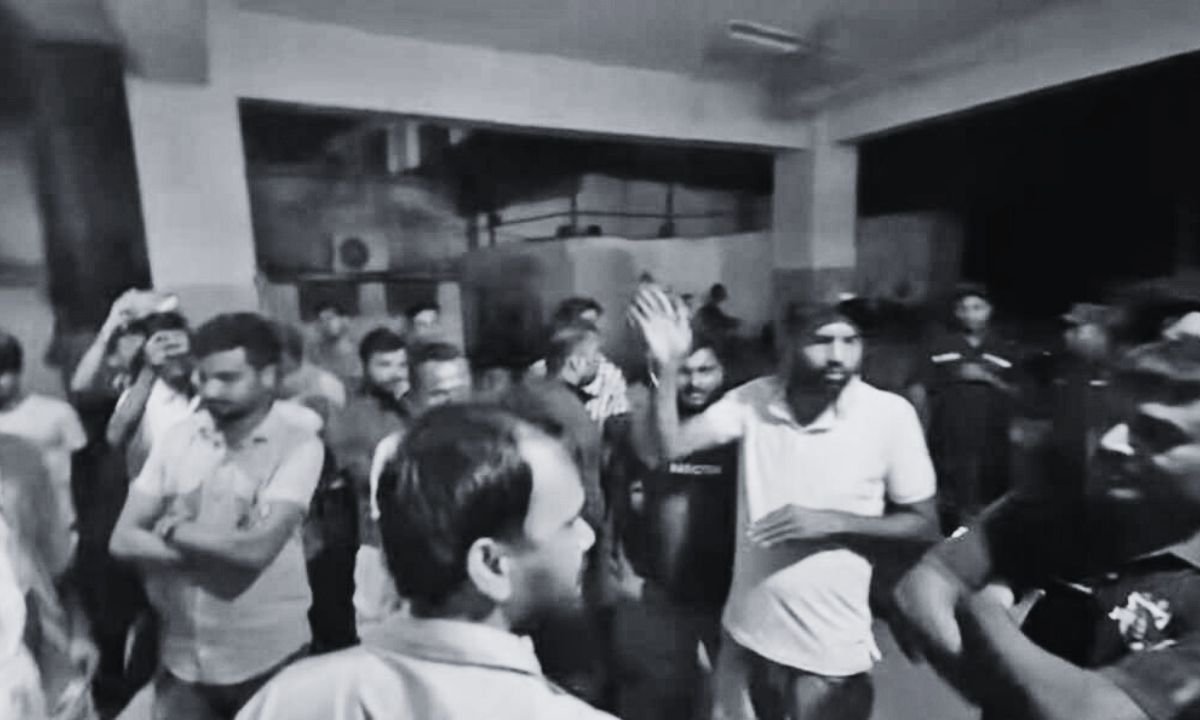Now Reading: Rice planting reaches 84% nationwide; Terai province records only 57%
- 01
Rice planting reaches 84% nationwide; Terai province records only 57%
Rice planting reaches 84% nationwide; Terai province records only 57%

After three days of regular rain, rice planting has increased in Parsa. Farmers who couldn’t plant earlier due to lack of water are now busy planting rice.
According to the Agriculture Knowledge Center in Parsa, about 90 percent of rice planting was completed by Tuesday. The center chief, Ramjiban Thakur, said some local areas have completed 92 to 94 percent of planting.
Rice planting is slightly less in Birgunj Metropolitan City, but Thakur expects farmers there to finish 100 percent planting by the end of the week. Farmers are also using boreholes and other irrigation methods in dry fields, so planting should be done by Saturday.
This year, about 39,000 to 40,000 hectares of land in Parsa are expected to be used for rain-fed rice farming, similar to last year.
Rice is the main crop in the district and is grown as the primary crop in all 14 local areas. Since there is still some rain expected, Thakur believes rice production will not drop much this year.
In Karnali Province, 96 percent of rice planting is complete. Out of 41,042 hectares of rice-growing land, 39,595 hectares have been planted, said Tilak Prasad Pandey, acting director of the Agriculture Development Directorate in Karnali.
Among the 10 districts of Karnali, Jumla, Humla, and Dolpa have finished 100 percent planting. Jumla has planted 2,890 hectares, Humla 585 hectares, and Dolpa 198 hectares.
Four districts have about 99 percent planting completed. Jajarkot leads with 99.2 percent planting, followed by Salyan, Mugu, and Rukum West with 99 percent. Kalikot has planted 98 percent of its 2,462 hectares.
Surkhet, the largest rice-growing district in the province, has 95 percent planting done, covering 14,174.95 hectares out of 14,921 hectares. Dailekh has planted 7,086.6 hectares out of 7,620 hectares.
Across the country, about 84 percent of rice planting is done with two weeks left until the end of the planting season. Sudurpaschim Province has almost finished planting.
In the Terai region, known as Nepal’s food store, only about 57.28 percent planting is complete. Although the monsoon arrived on time, lack of water delayed planting in Terai districts.
Nationwide, 1,378,966 hectares are used for rain-fed rice planting. By mid-August, 83.88 percent of this land was planted, according to the Crop Development and Agricultural Biodiversity Conservation Center. Last year at this time, planting was 96.47 percent complete.
In Terai, 213,438 hectares are planted, which is only 57.28 percent of the total 372,645 hectares suitable for rice planting there. Last year at this time, Terai had 95 percent planting done.
Due to drought, some seeds have been damaged or dried. Boreholes and wells have dried up, causing problems with irrigation and drinking water in Terai, said Mukund Bhusal, senior crop development officer at the Ministry of Agriculture and Livestock Development.
Because of drought, the government declared Terai a crisis area. A program to install 500 deep boreholes was announced but has been delayed. This delay caused less planting in Terai.
After recent rains, farmers in Terai are hopeful. The Agriculture Knowledge Center’s chief, Keshav Devkota, said about 20,322 hectares were planted in one week, increasing Terai’s total planted area to 213,438 hectares by mid-August.
The center collects planting data from local authorities to provide updated information. Devkota said continued rain will help improve planting in Terai but late planting might reduce yield and production. The Agriculture Ministry expects lower rice production and higher imports this year.
In the last fiscal year, Nepal imported 53.37 million kg of rice and seeds, costing over 2.1 billion Nepalese rupees. The ministry expects imports to increase this year.
Besides Terai, Koshi and Karnali provinces also have lower planting rates. Koshi has 89 percent planting done on 276,386 hectares, down from 95 percent last year. Gandaki province has 88.97 percent planting on 94,182 hectares, compared to 96 percent last year.
Sudurpaschim has the highest planting with 99.72 percent on 176,151 hectares. Karnali has 96.47 percent planting, down from 99 percent last year.
Lumbini province has 95.96 percent planting, Bagmati 92.92 percent, both slightly behind last year’s 97 percent.
Overall, rice planting is progressing well but some regions face challenges due to drought and late rains.
















